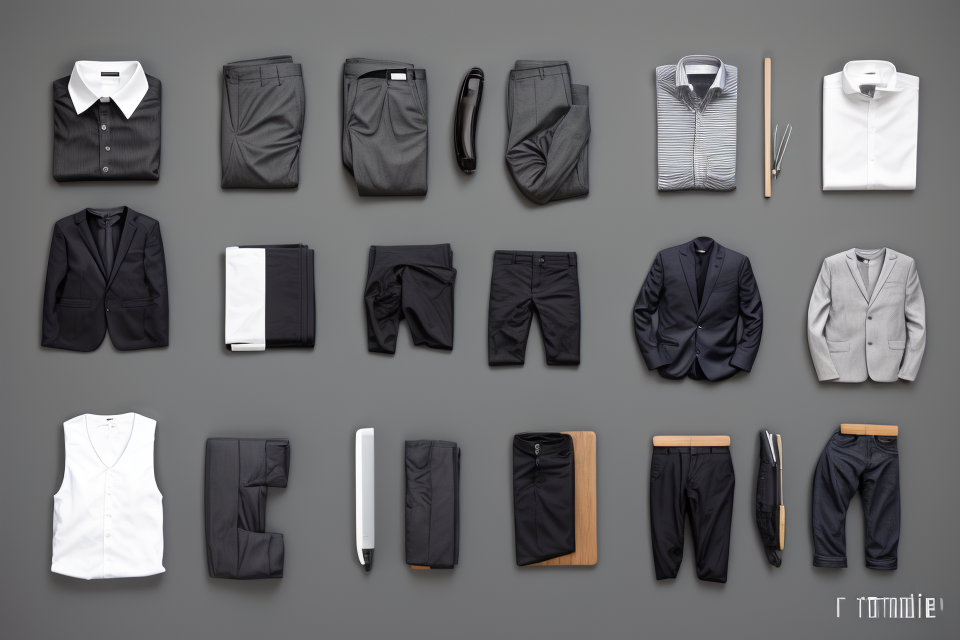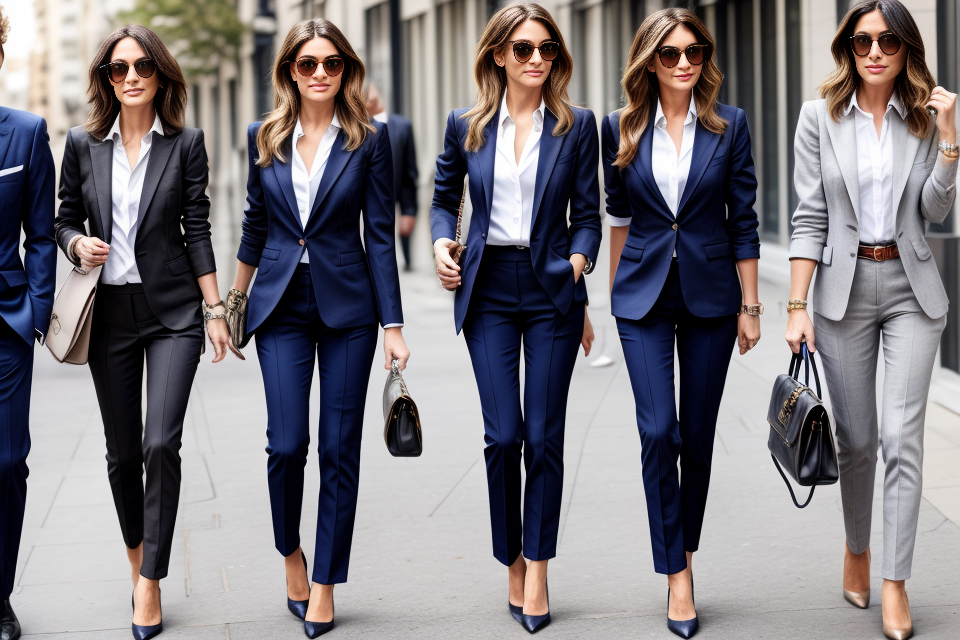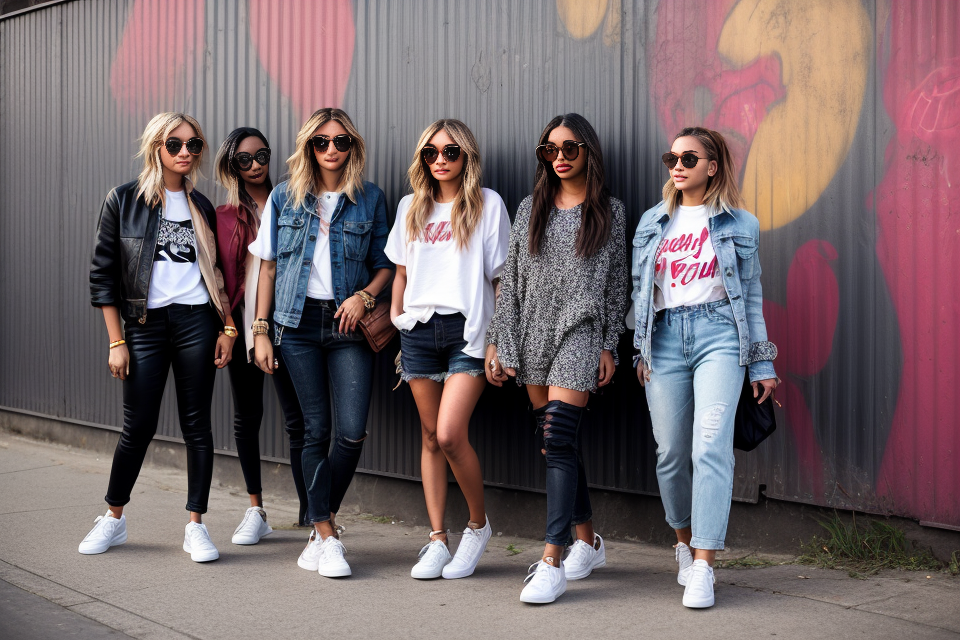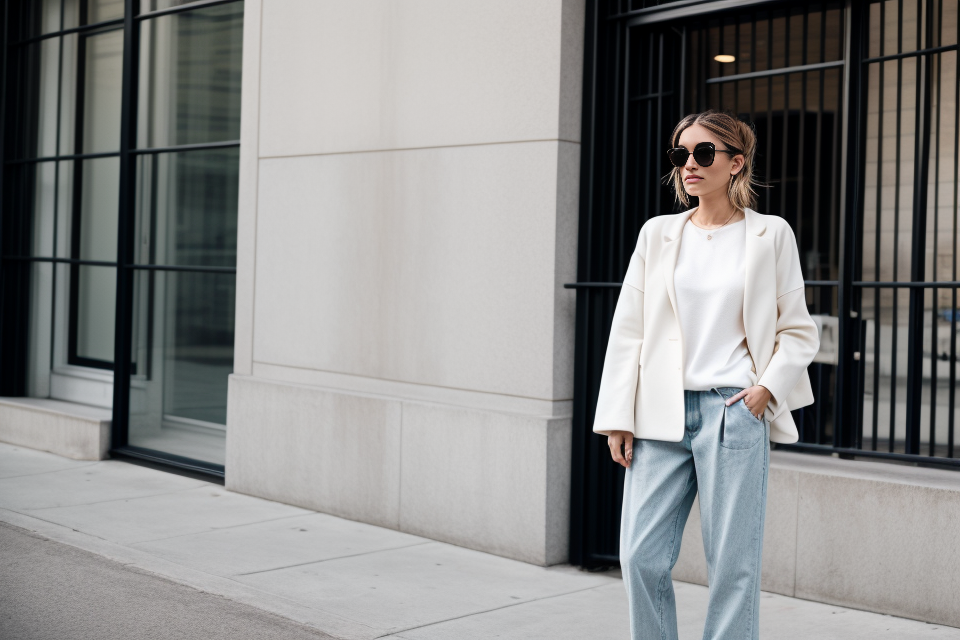
When it comes to dressing for casual occasions, the rules can be a bit tricky to navigate. What is considered appropriate attire for a casual event can vary depending on the context, location, and even the time of day. But don’t worry, we’ve got you covered! In this comprehensive guide, we’ll explore the ins and outs of casual dress codes, from beach weddings to backyard barbecues. We’ll take a look at what to wear and what to avoid, as well as some helpful tips for pulling together a stylish and put-together look. So whether you’re a seasoned pro at casual dressing or a newbie, read on for all the insider knowledge you need to rock any casual event with confidence.
Understanding Casual Dress Code
Key Features of Casual Attire
- Comfortable and relaxed fit:
- Casual attire is designed to be comfortable and relaxed, allowing individuals to move freely and feel at ease in their clothing. The fit of casual clothing is often loose and comfortable, without being too baggy or sloppy. This relaxed fit is a key feature of casual attire, as it allows individuals to focus on their activities rather than their clothing.
- Simple and versatile clothing items:
- Casual attire often consists of simple and versatile clothing items that can be easily mixed and matched to create a variety of outfits. Examples of simple and versatile clothing items include t-shirts, jeans, and sneakers. These clothing items are often made from durable and comfortable materials, such as cotton and denim, and can be dressed up or down depending on the occasion.
- Neutral colors:
- Neutral colors, such as black, white, and gray, are a key feature of casual attire. These colors are versatile and can be easily paired with a variety of other colors and patterns. Neutral colors also allow individuals to mix and match their clothing items without clashing or looking too bold. In addition, neutral colors are often associated with a clean and simple aesthetic, which is in line with the overall philosophy of casual attire.
The Importance of Fit and Quality
The Impact of Fit on Casual Dressing
In casual dressing, fit plays a crucial role in creating a polished and put-together look. A well-fitting outfit can make all the difference in how you present yourself to the world. It can make you look more confident, put-together, and stylish. A poorly fitting outfit, on the other hand, can make you look disheveled and unkempt.
When it comes to fit, it’s important to consider the following:
- The right size: Make sure your clothes fit you properly. Avoid wearing clothes that are too tight or too loose.
- The right proportions: Consider the proportions of your clothes in relation to your body. For example, if you have a shorter torso, you may want to avoid wearing clothes that are too long.
- The right silhouette: Choose clothes that flatter your body shape. For example, if you have an hourglass figure, you may want to choose clothes that accentuate your waist.
Investing in Quality Clothing for a Casual Wardrobe
In addition to fit, quality is also an important factor in creating a polished casual look. High-quality clothing is typically made from better materials, is more durable, and fits better. This means that it will last longer and look better over time.
When investing in quality clothing, consider the following:
- Material: Choose clothes made from high-quality materials that will stand the test of time.
- Construction: Look for clothes that are well-made and constructed with attention to detail.
- Brands: Consider investing in clothing from reputable brands that are known for their quality.
By paying attention to both fit and quality, you can create a casual wardrobe that looks polished and put-together, while still being comfortable and appropriate for everyday wear.
Dressing for Different Casual Occasions
Everyday Casual
When it comes to everyday casual dressing, the goal is to create an outfit that is comfortable, functional, and still looks put-together. Here are some outfit ideas for everyday casual dressing:
Outfit Ideas for Everyday Casual Dressing
- T-shirt and jeans: A classic combination that can never go wrong. Opt for a well-fitting t-shirt and a pair of dark wash jeans.
- Blouse and skirt: Pair a simple blouse with a skirt in a complementary color or pattern.
- Sweater and leggings: A cozy sweater paired with leggings is a great option for cooler weather.
- Casual dress: A casual dress can be dressed up or down depending on the occasion. Opt for a simple, solid-colored dress or a dress with a fun print.
Accessorizing for a More Polished Look
- Necklace: A simple necklace can add a touch of sophistication to any outfit.
- Belt: A belt can cinch in your waist and add definition to your outfit.
- Hat: A hat can add a fun and casual touch to any outfit.
- Cardigan: A cardigan can add warmth and a finished look to your outfit.
Remember, the key to everyday casual dressing is to keep it simple and comfortable while still looking put-together.
Semi-Formal Casual
Semi-formal casual events can be a bit tricky when it comes to dressing appropriately. The term “semi-formal casual” may seem like an oxymoron, but it’s important to understand that there is a fine line between semi-formal and casual attire. In order to ensure that you are dressed appropriately for the occasion, it’s important to know the difference between the two and to follow some basic tips for dressing for semi-formal casual events.
The Fine Line Between Semi-Formal and Casual Attire
Semi-formal attire is generally more formal than casual attire, but less formal than formal attire. Semi-formal events typically call for a jacket and tie for men, and a dress or a skirt and blouse for women. However, semi-formal casual events are a bit more relaxed and allow for a bit more creativity in terms of dress.
Tips for Dressing for Semi-Formal Casual Events
When it comes to dressing for semi-formal casual events, it’s important to strike a balance between being fashionable and being appropriate. Here are some tips to keep in mind:
- Avoid wearing anything too casual, such as t-shirts, shorts, or jeans.
- Opt for dress pants or a dress/skirt in a neutral color like black, navy, or gray.
- A collared shirt or blouse is appropriate for men and women, respectively.
- A blazer or sports coat is a good option for men, while a cardigan or a wrap dress can be a good choice for women.
- Accessorize with simple jewelry, such as stud earrings or a classic watch.
- Avoid wearing anything too revealing or casual, such as sandals or flip-flops.
By following these tips, you can ensure that you are dressed appropriately for semi-formal casual events while still looking stylish and fashionable.
Business Casual
Understanding the Business Casual Dress Code
When it comes to dressing for a business casual event, it’s important to understand the rules of the dress code. Business casual attire is often a blend of professional and casual styles, and the key is to look put-together and polished without being too formal.
Dressing Appropriately for a Professional Setting
When dressing for a business casual event, it’s important to consider the context of the event and the industry you’re in. For example, a business casual dress code for a law firm may differ from a technology company.
Here are some general guidelines to follow when dressing for a business casual event:
- Avoid wearing anything too casual, such as t-shirts, shorts, or flip-flops.
- Opt for dress pants or a skirt in a more professional fabric, such as wool or cotton.
- Choose a blouse or button-down shirt in a classic pattern or solid color.
- Avoid wearing anything too revealing or casual, such as low-cut tops or bare shoulders.
- A nice blazer or cardigan can add a touch of professionalism to your outfit.
- Accessorize with simple jewelry, such as stud earrings or a watch.
Remember, the goal of business casual attire is to look polished and professional, while still being comfortable and appropriate for the occasion.
Outdoor Casual
When it comes to dressing for outdoor casual activities, there are a few key things to keep in mind. First and foremost, comfort is key. You’ll want to wear clothing that allows you to move freely and won’t weigh you down or get in the way of your activities. At the same time, you’ll want to look put-together and stylish, so choose pieces that work well together and fit your personal style.
One great way to achieve both comfort and style is by layering. Layering allows you to add or remove clothing as needed to regulate your body temperature and keep you comfortable throughout the day. Some good layering options for outdoor casual activities include:
- Lightweight jackets or sweaters
- T-shirts or long-sleeved shirts
- Comfortable pants or shorts
- Lightweight scarves or pashminas
- Socks or knee-high socks
By layering these pieces, you can create a look that is both comfortable and stylish, and that will work well for a variety of outdoor casual activities. Whether you’re hiking, biking, or simply spending a day outdoors, layering is a great way to ensure that you’re dressed appropriately for the occasion.
Mix and Match: Creating Your Own Casual Style
Building a Capsule Wardrobe
Essential Clothing Items for a Casual Wardrobe
When building a casual wardrobe, there are certain essential clothing items that one should consider including. These include:
- T-shirts or V-neck shirts
- Sweaters or sweatshirts
- Jeans or leggings
- Dresses or skirts
- Cardigans or blazers
- Comfortable sneakers or loafers
Tips for Building a Versatile and Functional Wardrobe
In addition to including essential clothing items, it’s important to keep in mind some tips for building a versatile and functional wardrobe. These include:
- Choosing classic and timeless pieces that will never go out of style
- Investing in high-quality pieces that will last longer and look better over time
- Building a balance of different colors and patterns to create a cohesive look
- Organizing your wardrobe by category (e.g. tops, bottoms, outerwear) to make it easier to mix and match items
- Rotating your wardrobe to ensure that you wear everything equally and prevent over-wearing of certain items.
Accessorizing Your Casual Look
Accessorizing your casual look is an essential part of creating a stylish and put-together outfit. Accessories can add depth and dimension to your outfit, and they can also help to tie together different pieces in your wardrobe. Here are some tips for choosing the right accessories for your casual style and for mixing and matching accessories to create a cohesive look.
Choosing the Right Accessories for Your Casual Style
When it comes to choosing accessories for your casual style, it’s important to consider the overall vibe of your outfit. For example, if you’re wearing a more relaxed, bohemian-inspired outfit, you might opt for chunky necklaces or layered bracelets. On the other hand, if you’re wearing a more polished, tailored look, you might opt for simpler, more understated accessories like a thin necklace or a classic watch.
In general, it’s a good idea to stick to a limited color palette when it comes to accessorizing your casual look. This will help to create a cohesive and harmonious look, rather than overwhelming your outfit with too many different colors and patterns.
Tips for Mixing and Matching Accessories
When it comes to mixing and matching accessories, there are a few key things to keep in mind. First, try to choose accessories that complement your outfit rather than competing with it. For example, if you’re wearing a bold, patterned top, you might opt for simpler, more understated accessories like a thin necklace and a pair of stud earrings.
Second, try to vary the sizes and shapes of your accessories to create a visually interesting and dynamic look. For example, you might pair a large, statement necklace with a pair of delicate, filigree earrings.
Finally, try to balance your accessories by mixing up the materials and textures. For example, you might pair a chunky, knit scarf with a delicate, lace-trimmed top. This will help to create a cohesive and visually appealing look that’s sure to turn heads.
Layering for Different Seasons
When it comes to layering for different seasons, there are a few key tips to keep in mind. First, it’s important to consider the climate and weather patterns of the season you’re preparing for. This will help you determine what types of layers will be most appropriate for the specific conditions.
One useful approach is to layer in a way that allows you to easily add or remove layers as needed throughout the day. For example, you might start with a light jacket or sweater as a base layer, and then add a thicker coat or scarf as needed when the temperature drops.
Another important consideration is the type of fabrics you use for layering. Natural fibers like cotton, wool, and linen are generally a good choice for casual layering, as they are breathable and comfortable to wear. Synthetic materials like polyester and nylon can also be effective for layering, but they may not be as comfortable in hot weather.
It’s also a good idea to pay attention to the fit of your layers. Loose-fitting garments can be great for layering, as they allow for easy movement and can be easily added or removed as needed. Tight-fitting garments, on the other hand, may not be as practical for layering, as they may not allow for as much flexibility in terms of adding or removing layers.
Finally, it’s worth noting that layering can be a great way to add interest and texture to your outfit. By mixing and matching different types of layers, you can create a unique and personalized look that reflects your individual style.
In summary, layering is a key component of casual dressing, and there are a few key tips to keep in mind when layering for different seasons. Consider the climate and weather patterns of the season, choose natural or synthetic fabrics, pay attention to fit, and have fun experimenting with different layers to create a unique and personalized look.
Tips for Casual Footwear
Choosing the right footwear for your casual outfits is an essential aspect of creating a put-together yet relaxed look. The right pair of shoes can elevate your outfit from drab to fab in an instant. Here are some tips to keep in mind when selecting casual footwear:
- Know Your Style: The first step in choosing the right casual footwear is to identify your personal style. Are you a sneakerhead who loves a good high-top? Or do you prefer a more minimalist approach with a pair of clean white slip-ons? Whatever your preference, make sure your footwear complements your overall style.
- Consider the Occasion: The occasion and setting of the event will also play a role in determining the right footwear. For example, a pair of sneakers may be appropriate for a casual weekend brunch, but they may not be suitable for a formal dinner.
- Comfort is Key: Comfort should always be a top priority when it comes to casual footwear. A good pair of shoes should feel comfortable right out of the box, without needing to be broken in. Look for features such as cushioning, arch support, and breathable materials to ensure all-day comfort.
- Color and Material: The color and material of your footwear can also play a significant role in determining the overall look of your outfit. Opt for neutral colors such as black, white, and brown that can easily be paired with a variety of outfits. Leather and suede are classic materials that add a touch of sophistication to any casual outfit.
- Balance Your Look: When selecting casual footwear, it’s important to balance your look. Avoid pairing overly formal footwear with casual outfits, such as dress shoes with shorts or a t-shirt. Instead, opt for a more relaxed yet stylish option like sneakers or loafers.
By following these tips, you can easily find the perfect pair of casual footwear to complete your look. Whether you prefer sneakers, sandals, or boots, the right pair of shoes can take your casual outfit from drab to fab in an instant.
The Art of Casual Dressing: Confidence and Personal Style
Embracing Your Personal Style
Embracing your personal style is a crucial aspect of the art of casual dressing. It is about expressing your unique identity through your clothing choices. The following are some ways to embrace your personal style:
- Finding your unique style within the casual dress code
One way to embrace your personal style is to find your unique style within the casual dress code. This means experimenting with different clothing items and styles to determine what works best for you. You can start by trying out different colors, patterns, and silhouettes to see what flatters your body shape and personal taste.
- The importance of self-expression in dressing
Another way to embrace your personal style is to prioritize self-expression in your dressing. Clothing is a form of self-expression, and it can be a powerful tool for communicating your personality and individuality. By dressing in a way that reflects your personal style, you can feel more confident and authentic.
In conclusion, embracing your personal style is about finding clothes that make you feel comfortable, confident, and true to yourself. By experimenting with different styles and prioritizing self-expression, you can create a unique and authentic personal style that reflects your individuality.
Confidence in Casual Dressing
Building confidence in your casual style is essential to nailing the dress code. This can be achieved by embracing your personal style and being comfortable in your own skin. The connection between confidence and personal style is undeniable, as feeling confident in what you wear can boost your overall self-esteem.
To build confidence in your casual style, start by identifying your personal style. This involves understanding your preferences, values, and lifestyle, and how they influence your clothing choices. Once you have a clear understanding of your personal style, embrace it wholeheartedly. Wear clothes that make you feel good, both physically and emotionally. This will help you project an air of confidence, even if you’re just dressing casually.
It’s also important to remember that confidence comes from within. You don’t need to wear expensive or trendy clothes to feel confident. Instead, focus on finding clothes that fit well, are comfortable, and make you feel good about yourself. When you feel good about yourself, you’ll exude confidence, regardless of what you’re wearing.
In addition to feeling good about yourself, it’s also important to have a positive attitude. Instead of worrying about what others might think of your casual style, focus on having fun and expressing yourself through your clothing choices. This will help you feel more confident and self-assured, and will allow you to embrace the casual dress code with ease.
In conclusion, building confidence in your casual style is all about embracing your personal style, feeling good about yourself, and having a positive attitude. By doing so, you’ll be able to project an air of confidence, even when dressing casually.
Tips for Mastering the Casual Dress Code
- Developing a sense of personal style within the casual dress code
- Building confidence in your casual attire
Developing a Sense of Personal Style within the Casual Dress Code
- Experiment with different styles and silhouettes
- Incorporate your personal preferences and tastes
- Accessorize to add depth and personality to your look
Building Confidence in Your Casual Attire
- Choose clothes that fit well and make you feel good
- Pair pieces in unexpected ways
- Embrace your individuality and uniqueness
In order to master the casual dress code, it is important to develop a sense of personal style within the code. This can be achieved by experimenting with different styles and silhouettes, incorporating your personal preferences and tastes, and accessorizing to add depth and personality to your look.
Another important aspect of mastering the casual dress code is building confidence in your attire. One way to do this is by choosing clothes that fit well and make you feel good. It is also important to pair pieces in unexpected ways and embrace your individuality and uniqueness. By doing so, you will exude confidence and self-assurance in your casual attire, making you stand out in any setting.
FAQs
1. What is considered casual attire?
Casual attire refers to clothing that is comfortable, practical, and suitable for everyday wear. It is generally less formal than business or dressy attire and can include items such as jeans, t-shirts, sweaters, sneakers, and other similar clothing.
2. What should I avoid wearing for a casual event?
When it comes to casual events, it’s best to avoid wearing anything too formal or fancy. This includes items such as suits, dresses, or heels, which are typically reserved for more formal occasions. Instead, opt for comfortable, practical clothing that is appropriate for the occasion.
3. Can I wear jeans to a casual event?
Yes, jeans are a common and popular choice for casual events. However, it’s important to choose the right type of jeans. Avoid wearing ripped or torn jeans, as well as jeans with large logos or slogans, as these can be considered inappropriate for some casual events.
4. What type of shoes should I wear for a casual event?
When it comes to shoes, it’s best to choose comfortable, practical options that are suitable for the occasion. Sneakers, loafers, and other similar footwear are all good choices for casual events. Avoid wearing high heels or other formal footwear, as these can be considered too dressy for casual events.
5. Can I wear a dress to a casual event?
Yes, dresses can be a great choice for casual events, as long as they are appropriate for the occasion. Choose a dress that is comfortable and made of a breathable fabric, such as cotton or linen. Avoid wearing dresses that are too revealing or formal, as these can be considered inappropriate for some casual events.
6. Is it okay to wear a t-shirt to a casual event?
Yes, t-shirts can be a great choice for casual events, as long as they are appropriate for the occasion. Choose a t-shirt that is comfortable and made of a breathable fabric, such as cotton. Avoid wearing t-shirts with offensive or inappropriate graphics or slogans, as these can be considered inappropriate for some casual events.
7. What accessories can I wear with casual attire?
Accessories can be a great way to add personality and style to your casual outfit. Choose accessories that are practical and appropriate for the occasion, such as a belt, hat, or pair of sunglasses. Avoid wearing too many accessories, as this can be overwhelming and can detract from the overall look of your outfit.


